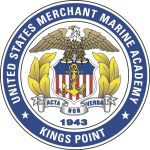News
Current score: China 5500, US 80
In his confirmation hearing before the Senate Armed Services Committee earlier this month, the nominee for Commander, U.S. Indo-Pacific Command, Adm. Samuel J. Paparo, confirmed that the current state of the U.S. Merchant Marine is a strategic weakness in any potential conflict with China.
As reported by USNI News, Sen. Mark Kelly again underscored the fact that “China has more than 5,500 merchant vessels, while the U.S. has 80 U.S.-flagged merchant ships operating worldwide.”
Adm. Paparo said that he believes “the current size and scope of the U.S. merchant fleet is a vulnerability. I believe that we have a force that’s sized for efficiency but has not been examined from the standpoint of effectiveness under fire.”
The admiral went on to say that the strength of the merchant fleet directly impacts how the military plans for war.
Sen. Kelly, a graduate of the U.S. Merchant Marine Academy, suggested – and Paparo agreed – that the nation’s maritime posture deserves the same level of congressional attention as semiconductors.
The U.S. Merchant Marine Academy Alumni Association and Foundation strongly agrees with Sen. Kelly’s and Adm. Paparo’s position. While the continued availability of semiconductors is vital to manufacturing and a healthy economy, the ability to transport arms, fuel, and supplies to our armed forces is a core component of any successful war plan. We ignore our serious sealift capacity deficit to our peril.
We cannot have a viable military sealift without highly trained, military obligated mariners; this is why Congress established USMMA in 1943, and the fact that graduates comprise over 80% of the U.S. Navy’s Strategic Sealift force proves why it is so important today.
